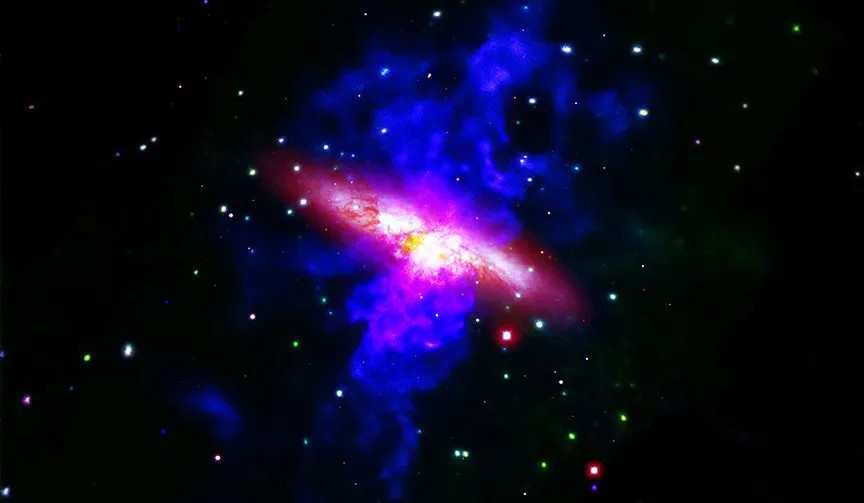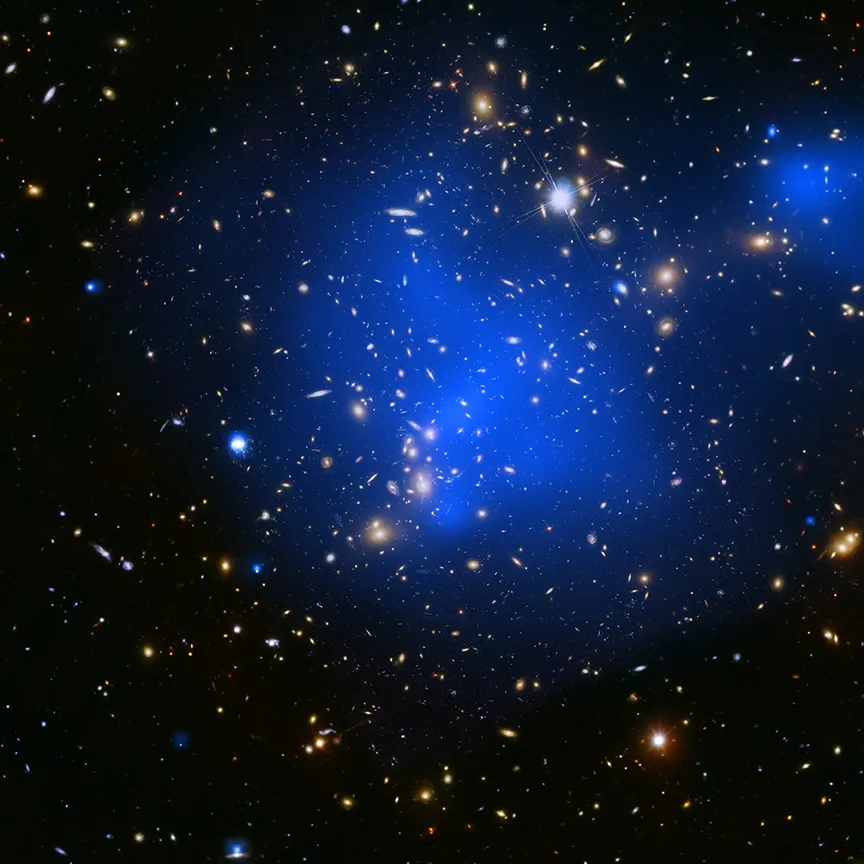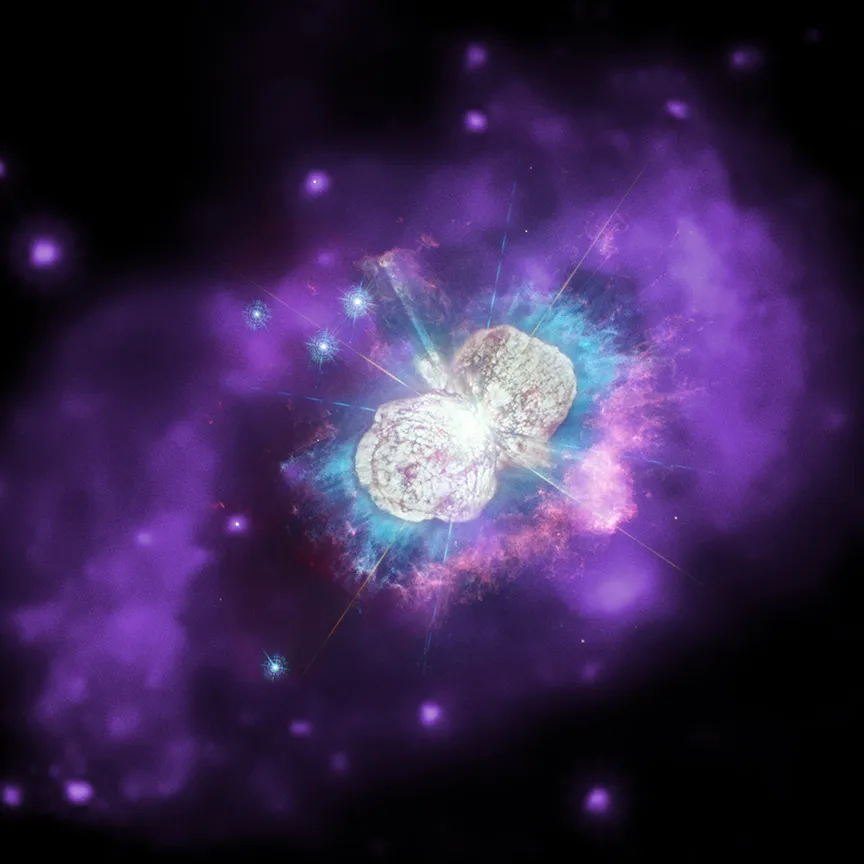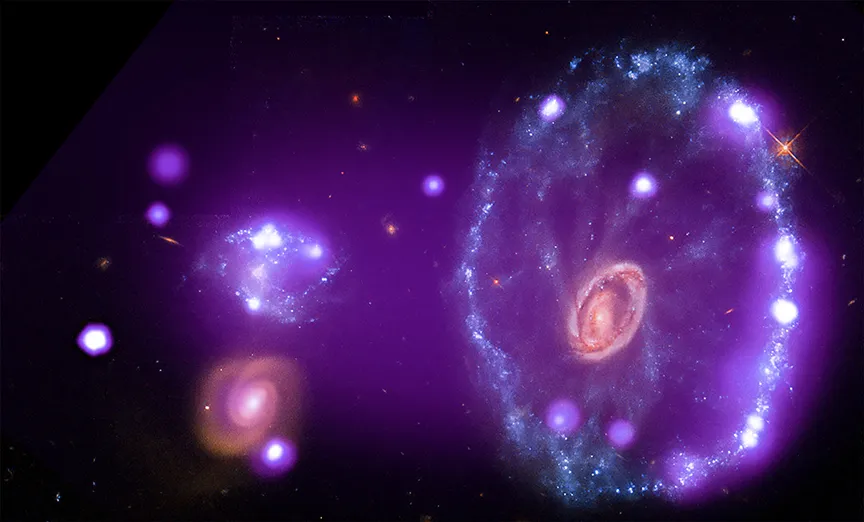Astronomers have released a set of images that reveal beautiful cosmic objects in wavelengths of light invisible to the human eye. The images are from the archives of the Chandra X-ray Observatory and show 2 galaxies, a galaxy cluster, a supernova remnant, a double star system and a planetary nebula.
While our eyes view the world in optical light, specially-designed telescopes can view the cosmos in different wavelengths, such as radio waves or gamma rays, giving astronomers the opportunity to see objects and processes in the Universe that would otherwise be invisible.

This is one of the key attributes of the Chandra X-ray Observatory, which was launched on 23 July 1999 and is positioned in an elliptical orbit around Earth that takes it as far as 139,000 km above the surface of our planet.
Its X-ray vision enables astronomers to peer through cosmic clouds and dust and get to the heart of some of the most dynamic objects in the Universe.
As these new images show, its light-gathering instruments continue to both dazzle with beautiful imagery, while also revealing the secrets of the cosmos.
M82

While many of the most popular images of galaxies show beautiful, intricate spirals, the Universe is not always so accommodating. Some galaxies are viewed edge-on from Earth's perspective.
This is the case with Messier 82, one of many objects depicted in the Messier Catalogue.
This image shows how the galaxy appears as it's undergoing a burst of star formation. X-rays from Chandra appear in blue and pink, and represent gas outflows generated by supernovae (more on these below) reaching temperatures of about 100 million degrees. The outflows stretch about 20,000 lightyears long.
Optical light detected by the Hubble Space Telescope reveals the galaxy itself, as seen in orange and red.
Abell 2744

This is a galaxy cluster, a massive collection of galaxies and one of the largest objects in the Universe held together by gravity.
Chandra's X-ray vision is able to view superheated gas that glows at temperatures of 10s of millions of degrees, millions of lightyears between the galaxies within the cluster.
In this image we can see X-rays from Chandra as a diffuse blue emission, while and optical light data from Hubble reveals the galaxies in red, green, and blue.
Supernova 1987A (SN 1987A)

A supernova is an explosion generated when a massive star reaches the end of its life and collapses in on itself.
On 24 February 1987, astronomers in the southern hemisphere saw one of the brightest supernovae observed in centuries in the Large Magellanic Cloud, which is a satellite galaxy of the Milky Way.
It's known as Supernova 1987A (SN 87A), and in this image Chandra data in blue shows the location of the supernova's shock wave as it hits surrounding interstellar material around 4 lightyears from the explosion. Optical data from Hubble is in orange and red.
Eta Carinae

Eta Carinae is a stellar system that contains two massive stars in orbit around one another. It may just be the next region in our Galaxy where a supernova could occur.
Previous stellar eruptions in Eta Carinae have produced a ring of hot gas that glows in X-ray light and forms a ring about 2.3 lightyears in diameter around the double stars.
This image shows optical light seen by Hubble in white, ultraviolet light seen by Hubble in cyan, and X-rays seen by Chandra in purple.
Cartwheel Galaxy

The appearance of this strange-looking galaxy is a result of a smaller galaxy having passed through its middle, churning up stars and dust and other cosmic material and resulting in a burst of energetic star formation.
Chandra spotted X-rays (in purple) from hot gas being dragged across a distance of 150,000 lightyears as a result of the collision.
Optical data from Hubble seen in red, green, and blue shows where this collision may have triggered star formation.
Helix Nebula

Not all stars end their lives in explosions known as supernovae. Stars up to 1.4 times the mass of our Sun will expand, their outer layers puffing out into space, creating a round object known as a planetary nebula.
These objects have nothing to do with planets: rather their round, puffed-out shape has led to them being referred to as such.
The Helix Nebula is one such example of a planetary nebula, and may offer an insight into the likely fate of our own Sun in about 5 billion years time.
This image of the Helix shows infrared data from NASA's Spitzer Space Telescope in green and red, optical light from Hubble in orange and blue, and ultraviolet from NASA's Galaxy Evolution Explorer in cyan.
Chandra's X-rays in white reveal the compacted white dwarf that has formed in the centre of the nebula.
For more information, visit the Chandra X-ray Observatory website.
